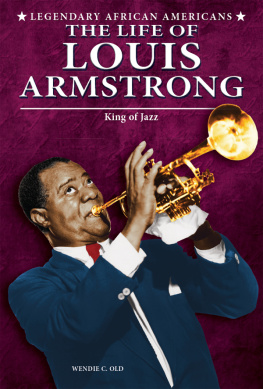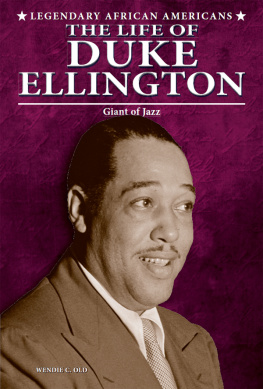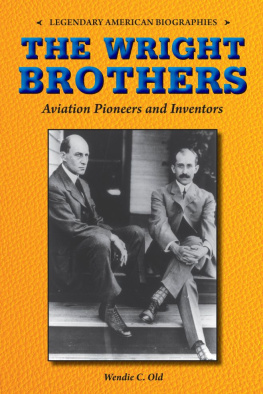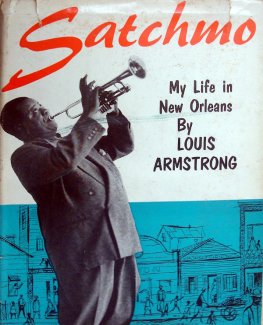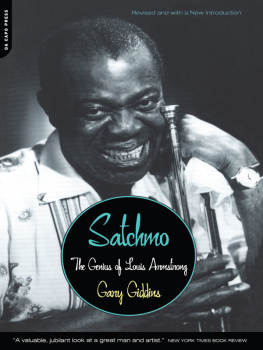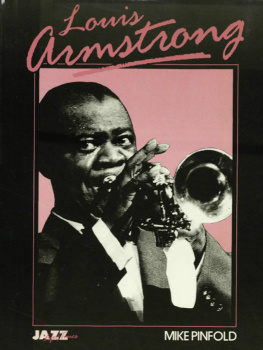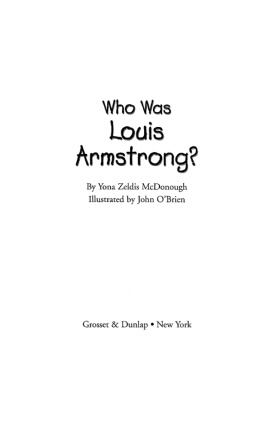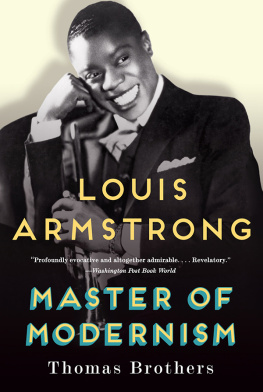Louis Armstrongs High Notes
Music has been in my blood from the day I was born, exclaimed Louis Armstrong, who rose from poverty and a troubled childhood to set the music world on fire. For more than fifty years, Armstrong dazzled audiences with his lively trumpet playing and trademark raspy singing voice.
In The Life of Louis Armstrong: King of Jazz, author Wendie C. Old weaves a rich, colorful tapestry of the life of this beloved and brilliant musician known to his fans as Satchmo. With a natural talent for showmanship, Louis Armstrong proved to be one of the most extraordinary performers of the Jazz Age and beyond. His improvisational skill as a soloist influenced jazz artists worldwide. Armstrong helped create jazz, made it an honored part of American music, and spread its popularity throughout the world. Louis Armstrong's High Notes
engaging introduction
School Library Journal
This is an interesting biography
Maine Examination Collection
ABOUT THE AUTHOR
In addition to writing extensively, Wendie C. Old has worked as a children's librarian for more than thirty-five years. She has a degree in history from West Virginia University and a master's in library science from the University of Kentucky.


Image Credit: Library of Congress
With a natural talent for entertaining, Louis Armstrong proved to be one of the most extraordinary performers of the Jazz Age and an influence to musicians throughout the world.
On a quiet night in 1921, a trombone player named Jack Teagarden wandered with a friend through the French Quarter of New Orleans. Far off in the distance, the lights of a passenger steamboat glided through the mist. The sound of music drifted over the water.
Teagarden describes his meeting Louis Armstrong this way: The boat was still far off, but in the bow I could see a Negro standing in the wind, holding a trumpet high and filling the night with the hottest, the sweetest, the purest jazz Id ever heard.... I stayed absolutely still, just listening, until the boat dropped anchor....
When the boat docked, Teagarden ran up the gang plank to meet the unknown horn player with the round, open face. They would become friends, performing together off and on for the rest of their lives.
Armstrong had been playing in jazz bands aboard the steamboats cruising the Mississippi River since 1919. These riverboats brought the New Orleans jazz sound to the rest of the country. Armstrong was part of the beginning. He became the leader among those who spread the music throughout the world.
In the previous century, these riverboats had been important haulers of freight up and down the rivers and the canals connecting them. But with the development of the railroads crisscrossing the country, many riverboat lines went out of business. However, Joe Streckfus was determined that his riverboat line would not go out of business. He simply changed his businessfrom hauling freight to entertaining people.
He called his boats excursion boats. In the winter months his boats used New Orleans, Louisiana, as their home port. On weekends the boats would take passengers for a short trip up the river. On these excursions, they offered food and drinks. A band on the upper deck would play music for dancing. This idea was so popular that these excursion riverboats are still in business today.
From May through November, the riverboats took long trips from New Orleans north to St. Paul, Minnesota, more than one thousand miles upriver. The boats stopped at each port along the river.
To attract customers, the bandleader would perform cheerful tunes on the shipboard calliope. This instrument looks like an organ and is powered by steam from the boats engines. Its sound carries for quite a distance. When a good-sized crowd of townspeople had gathered to see what all the noise was about, they would be offered tickets for an evenings trip on the river.
Streckfus hired Fate Marable from the African-American musicians union in 1910 to organize the bands aboard the riverboats. Marable demanded a high standard of musical ability and had his pick of the best musicians up and down the river.
At first he chose only white musicians. In 1917 Marable decided to hire some of the young African Americans in New Orleans who were creating jazz, the new hot music. That kind of music attracted him, despite the fact that most of these early jazz musicians couldnt read music.
Young Louis Armstrong was one of the hot young horn players Marable hired. Armstrong had the ability to listen to someone play a song just once and then he could pick up his cornetan instrument similar to a trumpetand copy the sound. However, Marable expected everyone in the band to be able to play standard dance music as well as the new jazz. Armstrong soon discovered that it was necessary to know how to read all those dots and bars on the sheets of music. Several of the band members helped him learn. His marvelous musical ear allowed him to fake it while he picked up this necessary skill.
Unlike his previous musical gigs, this job was full-time. Armstrong was able to quit his part-time jobs and concentrate on playing his instrument. This concentration on musical performance to the exclusion of all else helped him to polish his style.
At first he performed only for the short day excursions based in the port of New Orleans. In 1920 he graduated to the summer-long trips upriver.
That long voyage upriver was Armstrongs first trip away from home. He was fascinated by the constantly changing scenery along the banks of the river. From New Orleans, the boat slipped through the marshy Mississippi delta in Louisiana on into the state of Mississippi. On the riverbanks of western Tennessee and Kentucky, fields of bluegrass waved.
Larger and larger cities faced the river. This part of the United States had not known slavery and had few African-American citizens. For these and many other northern towns, the excursion steamboats were their first exposure to African Americans and the music of New Orleans. When Armstrong described their reaction, he said,... the ofays [white people] were not used to seeing colored boys making fine music for them to dance by.
Armstrongs ready smile and outgoing nature made him popular with the shipboard audiences. The pleasure he took in performing music was contagious. The more he enjoyed what he was doing, the more the audience enjoyed the show.
His improvised solos on the cornet proved to be as popular in the North as they were in New Orleans. Legend has it that Armstrong could start a solo when he was ten miles upriver and still be playing variations of it when the boat reached the dock.
In 1922 Armstrong received an invitation to play with the best jazz band in Chicago, perhaps the best in the worldJoe Olivers Creole Jazz Band.
Armstrong thought about this offer. If he took the job, he would be nine hundred miles from home. He would have no backup jobs if this one failed. No one there would know his reputation on the river. In addition, he had known many musicians who left New Orleans with high hopes, only to return poor and hungry. Would the same thing happen to him?
On the other hand, Joe Oliver was Armstrongs musical hero and his friend. It was the opportunity of a lifetime. Armstrong decided to grab it. The twenty-two-year-old musician boarded a northbound train on August 8, 1922, and stepped into history.

